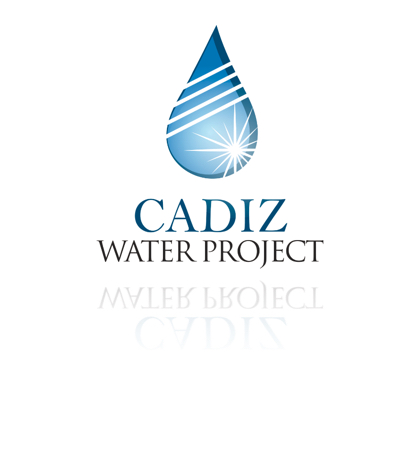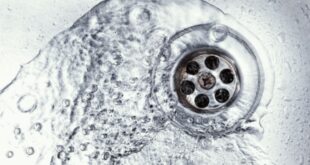A new scientific study has confirmed a previous California Environmental Quality Act (CEQA) determination that a natural spring – Bonanza Spring – in the eastern Mojave Desert will not be adversely impacted by the Cadiz Valley Water Conservation, Recovery and Storage Project. The project is designed to capture groundwater currently lost to evaporation at the base of a 1,300-square-mile watershed. The water is slated as a new water supply for approximately 400,000 people in Southern California.
In 2011 – 2012, the Cadiz Water Project was reviewed and approved by Santa Margarita Water District and the County of San Bernardino in accordance with CEQA. It’s certified Final Environmental Impact Report concluded that project operations would have no significant impacts on the environment, including springs in the surrounding mountains.
California Professional Geologist Miles Kenney, Ph.D. and California Certified Hydrogeologist Terry Foreman co-authored the new study of Bonanza Spring after extensive field work, site observation, and geologic mapping. The study was also peer reviewed by other hydrology, geology and hydrogeology experts.
Bonanza Spring, the closest perennial natural spring to the Cadiz Water Project, is separated from the Project’s planned wellfield by 11 miles and by 1,000 feet of elevation. During extensive field work, Dr. Kenney identified two convergent fault zones that are blocking, or “damming,” upstream groundwater flowing in fractured bedrock above the spring .These faults intersect exactly at the Bonanza Spring, and groundwater is surfacing from the fractured rocks and spilling over the faults to form it.
The fractured rocks are at a limited depth and do not extend to the downstream aquifer in the Fenner Gap, known as the “alluvial aquifer,” where the Cadiz Water Project will operate. The faulting and limited depth of the fractured rocks and the extensive exposure of these permeable rocks upslope of Bonanza Spring have created a catchment area that provides a long-term source of water to the spring from above that is independent of, and not influenced by, conditions in the alluvial aquifer at the Cadiz area miles below. Based on these important geologic findings by Dr. Kenney, the report concludes that Cadiz operations are disconnected from Bonanza and therefore cannot affect the spring, or plants and animals that may rely on it.
“The most compelling finding is that we identified two relatively robust fault zones that show evidence of being impermeable to groundwater and that intersect essentially exactly at Bonanza Spring,” Dr. Kenney said. “Fault zones are well known to be groundwater barriers, and we found that to be the case here.”
Dr. Kenney spent six days performing field mapping consisting of observations of lithologic units, fracturing, faulting and other structures. He additionally spent weeks conducting historical imagery mapping via Google Earth in order to map the entire western Clipper Mountains. His study is the first site-specific assessment of Bonanza Spring and provides important new information for future study. Dr. Kenney also worked with Hydrogeologist Foreman to conduct a detailed review of available scientific literature.
Foreman has conducted groundwater basin analyses in California for more than 40 years. He stated that, “The geology evidences a distinct separation between the alluvial aquifer where Cadiz wells will be situated and the fractured crystalline igneous rocks where the spring occurs. Therefore,” Foreman continued, “the long-term sustainability of Bonanza is not related to pumping at Cadiz but rather is dependent on the precipitation that provides recharge to the spring catchment. As a result, climate change is a bigger threat to Bonanza than Cadiz ever would or could possibly be.”
In addition to the work by Dr. Kenney and Foreman, 10 other hydrologists, geologists and hydrogeology experts. They were invited to observe physical conditions at the spring in December 2017 and comment on the assessment.
University of Texas at Austin hydrogeology professor, Dr. John Sharp, participated in the site visit and also peer-reviewed the final report. His conclusion: “Dr. Kenney knows more about the geology of this area than anyone else and he’s the expert. Having reviewed the mapping and explanation of the geology in the area, I am convinced that the projected pumping for Cadiz is not going to have any measurable effect on Bonanza Spring at all.”
Baseline monitoring of the springs is now underway and final arrangements are being made to convey water conserved by the Cadiz Water Project to communities across Southern California. The study and related materials, including a video about the Bonanza Spring, are available at http://www.cadizwaterproject.com/2018-bonanza-spring-study/
 California Water News Daily Your Source For Water News in California
California Water News Daily Your Source For Water News in California


